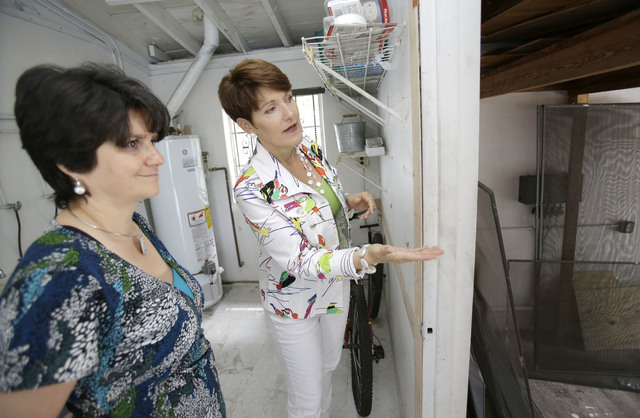Sales of U.S. existing homes up 4.9 percent in May
WASHINGTON — Sales of previously owned U.S. homes posted the best monthly gain in nearly three years in May, providing hope that housing is beginning to regain momentum lost over the past year.
The National Association of Realtors reported Monday that sales of existing homes increased 4.9 percent last month to a seasonally adjusted annual rate of 4.89 million homes. The monthly gain was the fastest since August 2011, but even with the increase, sales are still 5 percent below the pace in May 2013.
“Sales appear to be moving up again, although the increase to date — over two months — reverses just a fraction of earlier weakening,” Jim O’Sullivan, chief U.S. economist at High Frequency Economics, said in a research note.
Sales had been dampened by last year’s rise in mortgage rates from historic lows and various other factors including tight supplies and tougher lending standards.
The median price of a home sold in May was $213,400, up 5.1 percent from a year ago.
By region of the country, sales were up the most in May in the Midwest, an 8.7 percent gain which likely reflected further catch-up from the severe winter. Sales rose 5.7 percent in the South and 3.3 percent in the Northeast but showed only a slight 0.9 percent increase in the West.
The number of first-time buyers remained stuck near record lows at just 27 percent of sales in May, down from 29 percent in April. Analysts expressed concerns about the scarcity of first-time buyers, who historically have made up around 40 percent of the market.
“The existing home sales market can only retain its strength for so long if move-up buyers cannot find a first-time buyer to purchase their starter homes,” said Stephanie Karol, an economist at Global Insight.
The level of distressed sales — either foreclosures or short-sales in which the homeowner has to sell for less than the value of the mortgage — declined to 11 percent of all sales in May, an improvement from 18 percent of all sales a year ago.
After hitting a recent peak of 5.38 million sales at an annual rate last July, sales started sliding. Potential buyers have been grappling with a limited supply of houses, more expensive homes and lending standards which have been tightened in response to the housing boom of the past decade which resulted in millions of houses going into foreclosure.
Five years into the recovery from a deep recession that was triggered in part by the collapse in housing, housing sales have yet to return to their historic averages. Demand remains strong for the most expensive homes but has faltered for starter homes and those priced for middle class buyers.
The pace of home sales is below the 5.1 million homes sold in 2013 and off the pace of 5.5 million annual sales that would be consistent with a healthy housing market.
Lawrence Yun, chief economist for the Realtors, said because of the weaker start to sales this year, he expects that sales for the entire year will be down 3.1 percent this year to 4.9 million, compared with 5.1 million sales of existing homes in 2013, which had been a 9.2 percent rise from 2012.
Yun said he was predicting a stronger second half for sales this year but he said that would not be enough to compensate for the weakness at the start of this year, a slowdown that reflected in part a harsh winter.
Sales of existing homes began to slow in the second half of 2013 as mortgage rates crept up from historic lows, but home prices continued to rise due to a lack of available homes for sale.
Average rates for 30-year fixed-rate mortgages declined to 4.17 percent last week, down from 4.20 percent the previous week. Mortgage rates are about a quarter of a percentage point higher than they were at the same time last year.
Yun forecast that mortgage rates will be rising at the end of this year as the Federal Reserve moves closer to starting to boost interest rates. He forecast rates would average 4.9 percent in the last three months of this year and 5 percent in the first quarter of 2015.
The total inventory of homes for sale at the end of May climbed 2.2 percent to 2.28 million homes, which represents a 5.6-month supply at the May sales pace. Inventory is 6 percent higher than a year ago, which analysts said should help to slow price gains and boost sales by giving would-be buyers more homes to choose from.






















